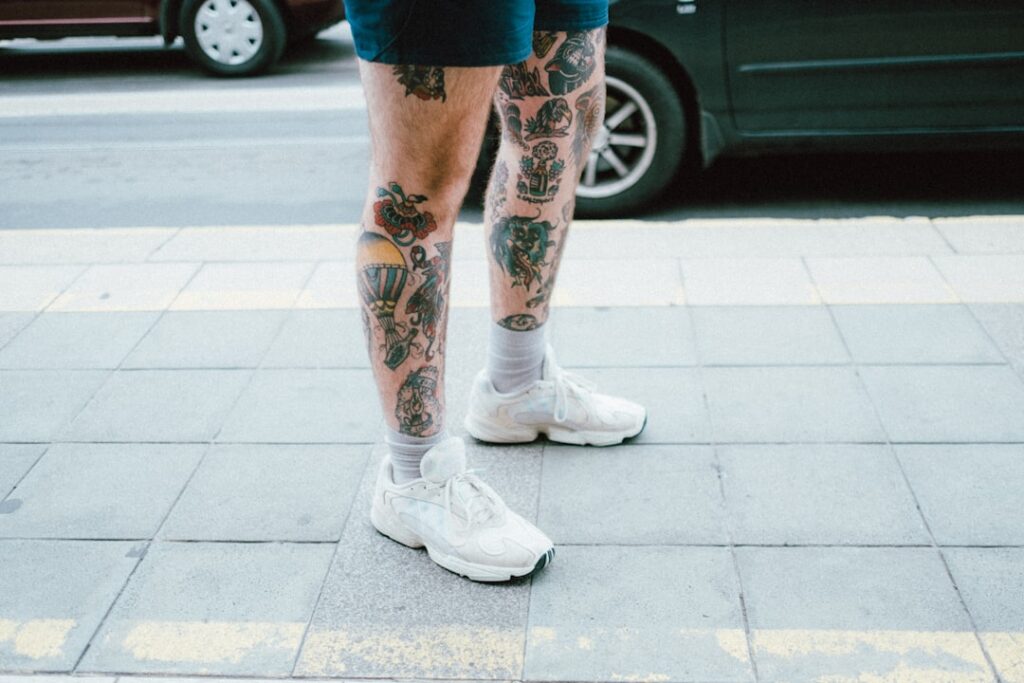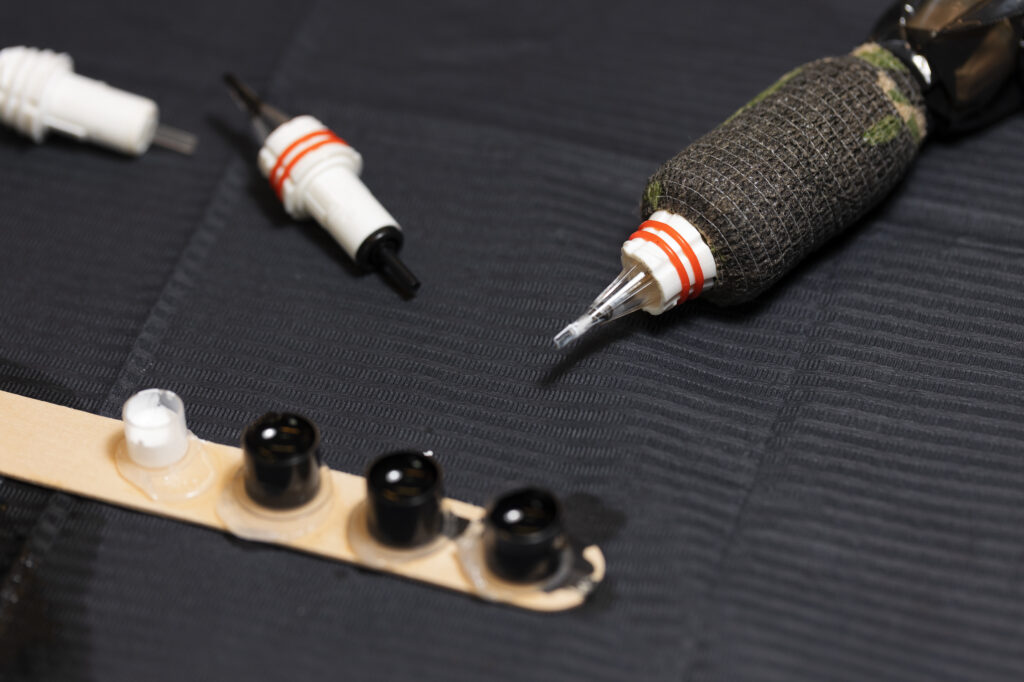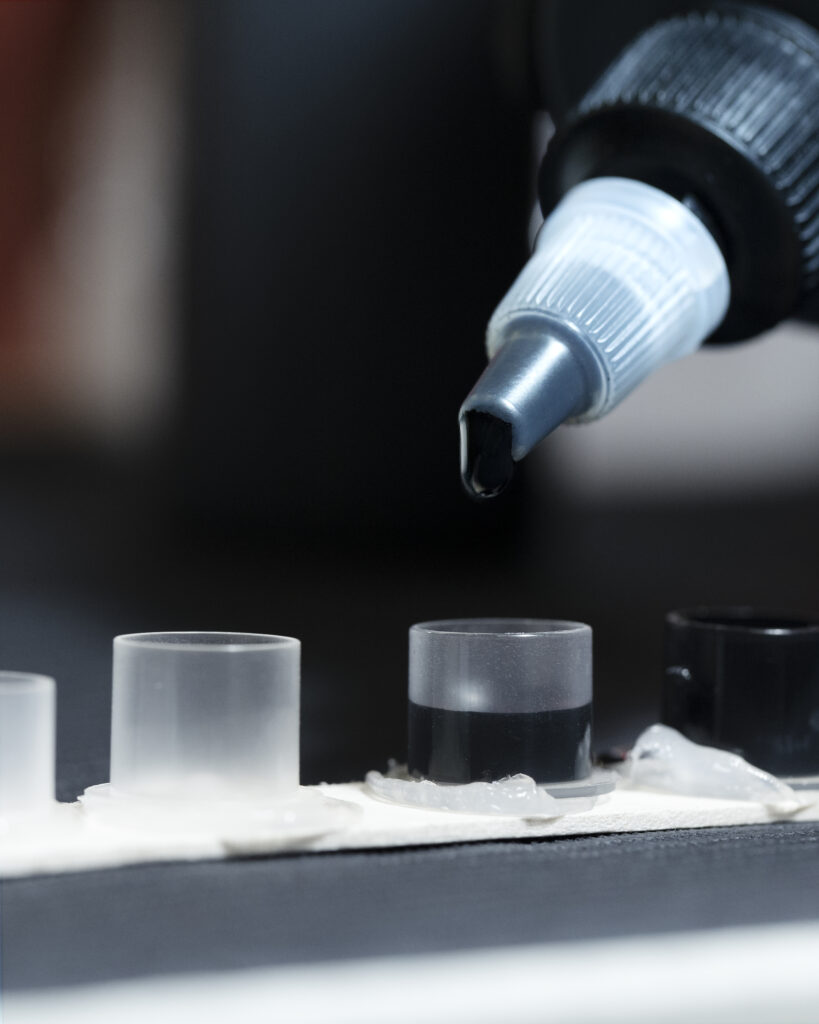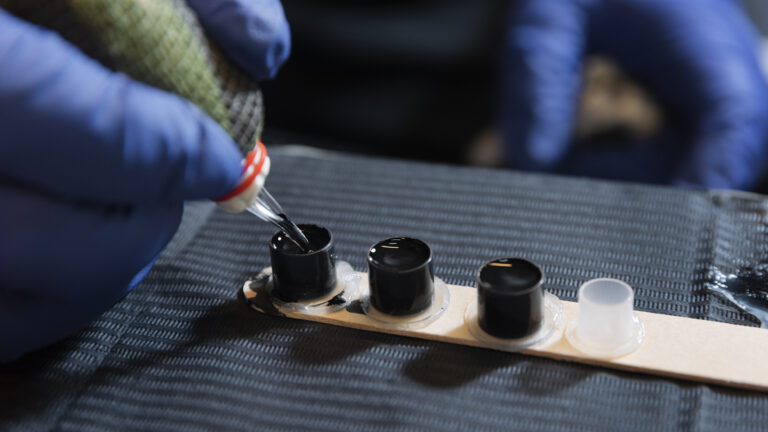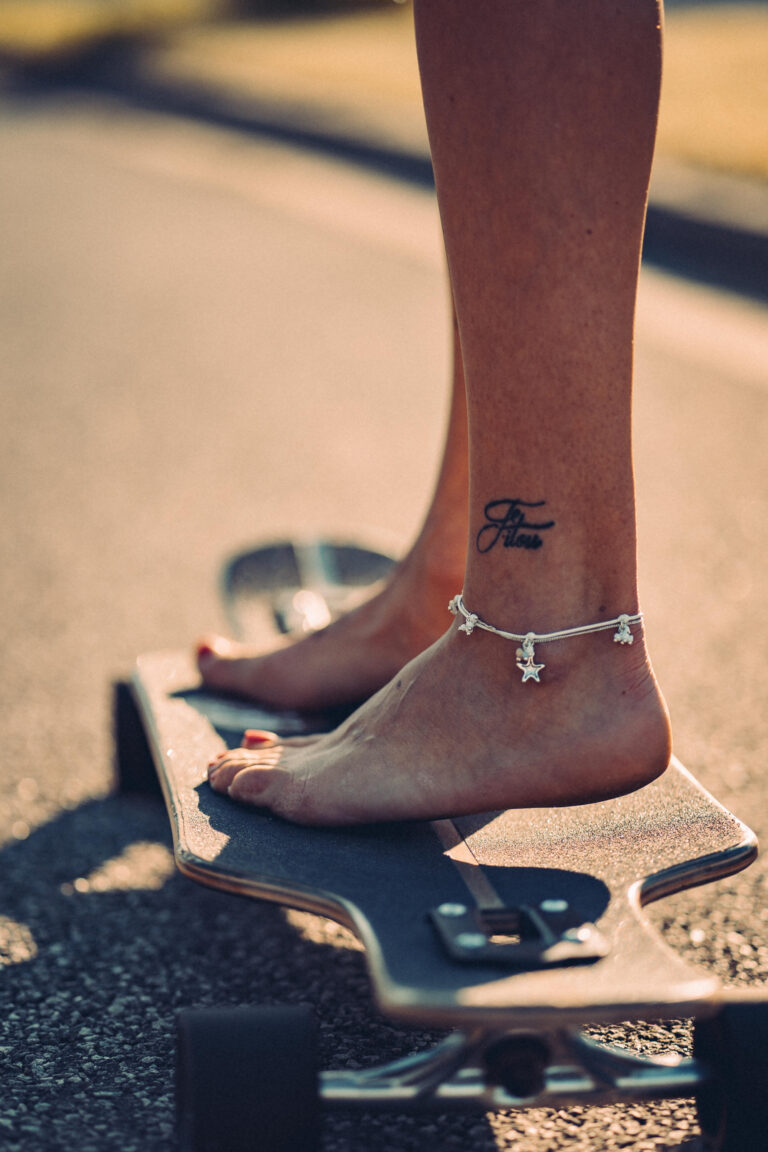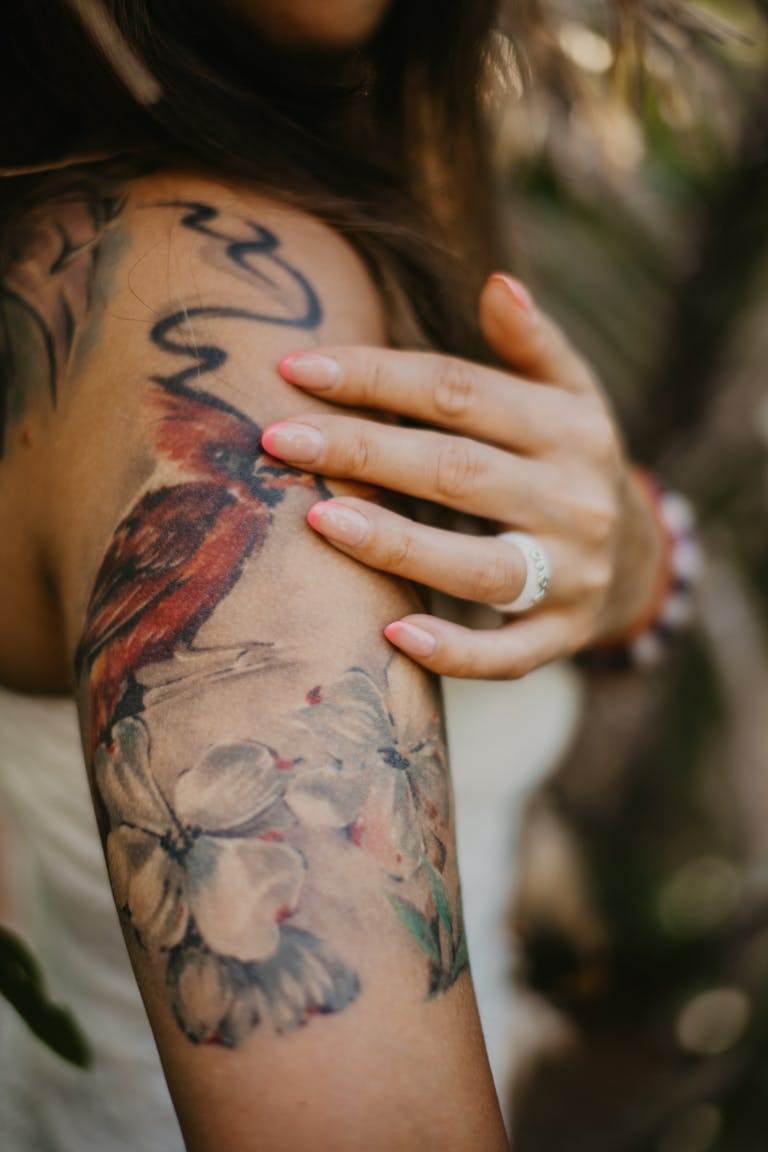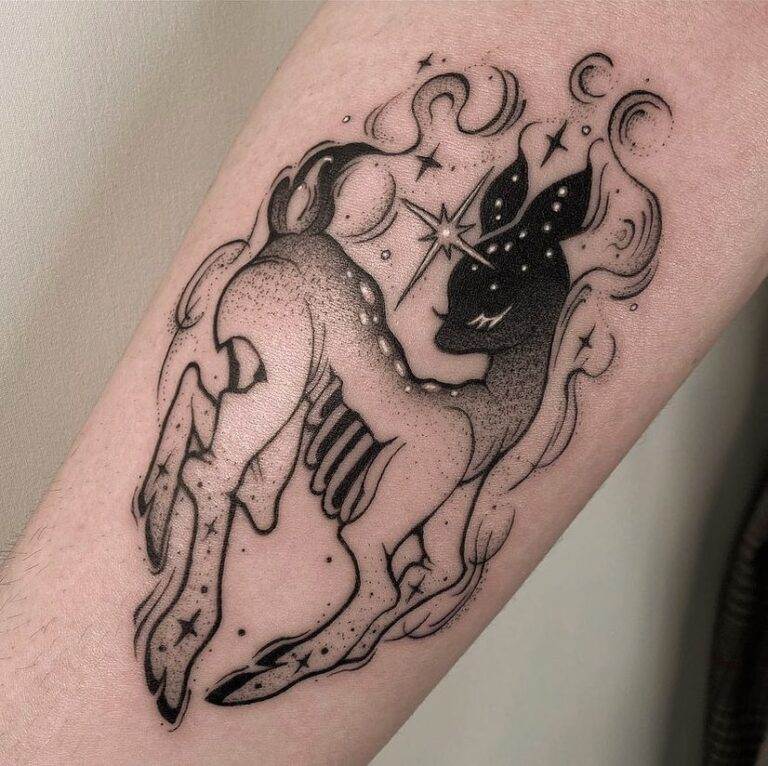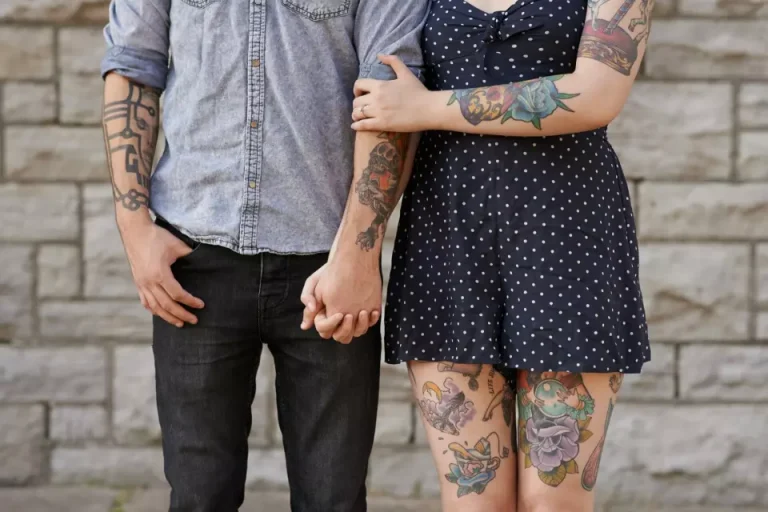A sleeve tattoo is a significant and intricate form of body art that covers a substantial portion of the arm, typically extending from the shoulder to the wrist. This style of tattooing has gained immense popularity over the years, evolving from simple designs to elaborate narratives that tell a story or express personal beliefs. The term “sleeve” refers to the way the tattoo wraps around the arm, much like a garment.
This type of tattoo can be composed of various elements, including symbols, images, and patterns, all woven together to create a cohesive piece of art. The appeal of sleeve tattoos lies not only in their visual impact but also in their ability to convey deep personal meaning. Many individuals choose sleeve tattoos to commemorate significant life events, honor loved ones, or express their passions and interests.
The process of designing a sleeve often involves careful consideration of the themes and symbols that resonate with the individual, making it a deeply personal journey. As such, a sleeve tattoo can serve as a canvas for self-expression, allowing wearers to showcase their identity and experiences in a bold and artistic manner.
Key Takeaways
- A sleeve tattoo is a large tattoo that covers a significant portion of the arm, from the shoulder to the wrist.
- When choosing a theme or style for your sleeve, consider your personal interests, cultural influences, and overall aesthetic preferences.
- Planning the placement and flow of your tattoos is crucial for creating a cohesive and visually appealing sleeve.
- Filler and background designs can enhance the overall look of your sleeve and tie the individual tattoos together.
- Working with a skilled tattoo artist is essential for bringing your sleeve tattoo vision to life and ensuring high-quality results.
Choosing a Theme or Style for Your Sleeve
Selecting a theme or style for your sleeve tattoo is one of the most crucial steps in the design process. The theme serves as the foundation upon which the entire tattoo will be built, guiding the choice of images, symbols, and colors. Popular themes include nature, mythology, spirituality, and personal milestones.
For instance, someone who has a deep connection to nature might opt for a sleeve featuring flora and fauna, while another person might choose a theme centered around their cultural heritage or personal beliefs. In addition to thematic considerations, the style of the tattoo plays a significant role in its overall aesthetic. Various styles exist within the tattooing world, including traditional, neo-traditional, realism, watercolor, and abstract.
Each style has its unique characteristics and techniques that can dramatically alter the final appearance of the sleeve. For example, traditional tattoos often feature bold lines and vibrant colors, while realism focuses on lifelike representations. When choosing a style, it’s essential to consider not only personal preference but also how well it complements the chosen theme.
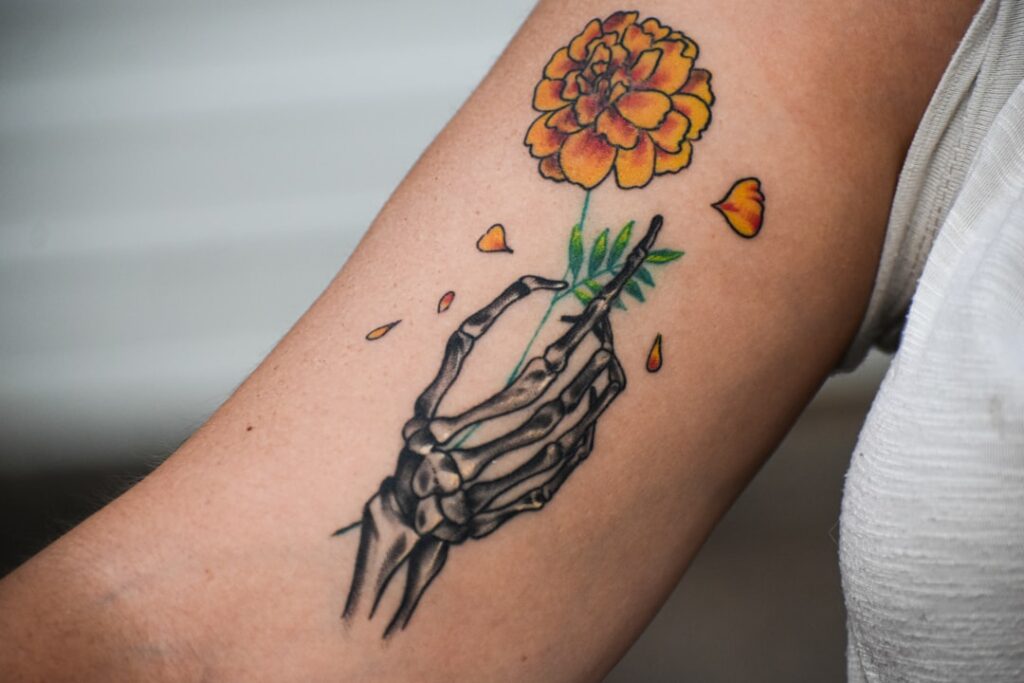
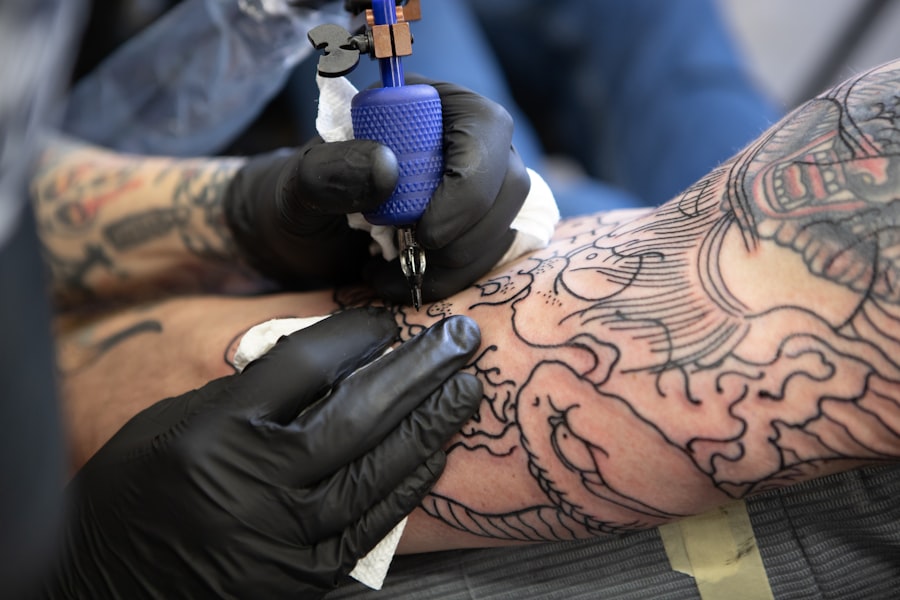
Planning the Placement and Flow of Your Tattoos
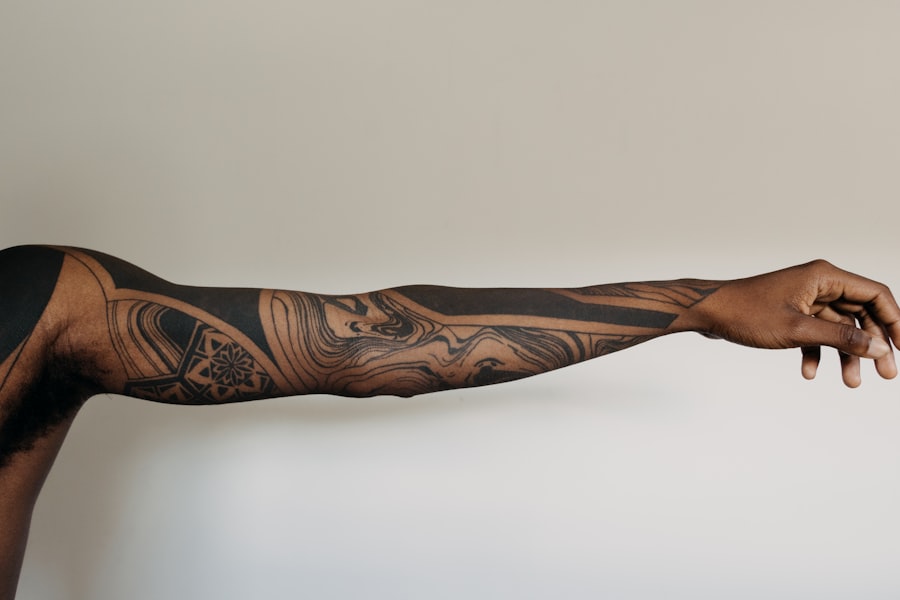
Once you have settled on a theme and style for your sleeve tattoo, the next step is to plan the placement and flow of the designs. The placement of each element is critical in creating a harmonious composition that enhances the natural contours of the arm. A well-planned sleeve will take into account how each design interacts with the others, ensuring that there is a sense of movement and continuity throughout the piece.
Flow is particularly important in sleeve tattoos because it dictates how the eye moves across the design. A skilled tattoo artist will consider factors such as negative space and how different elements connect to one another. For example, larger designs may serve as focal points, while smaller elements can fill in gaps and create balance.
The goal is to create a seamless transition between different parts of the sleeve, allowing each element to complement rather than compete with one another.
Incorporating Filler and Background Designs
Incorporating filler and background designs is an essential aspect of creating a cohesive sleeve tattoo. Filler elements serve to connect larger designs and fill in empty spaces, ensuring that the overall composition feels complete. These fillers can take many forms, such as patterns, textures, or smaller images that relate to the main theme.
For instance, if your sleeve features large floral designs, you might choose to incorporate leaves or vines as filler elements to create a sense of unity. Background designs also play a vital role in enhancing the depth and richness of a sleeve tattoo. They can provide context for the main elements and help to create an immersive experience for viewers.
Backgrounds can range from simple shading to intricate landscapes or abstract patterns that tie everything together. When thoughtfully integrated into the design, these background elements can elevate the overall impact of the sleeve, making it not just a collection of images but a cohesive work of art.
Working with a Skilled Tattoo Artist
Collaborating with a skilled tattoo artist is paramount when it comes to bringing your sleeve tattoo vision to life. A talented artist will not only possess technical expertise but also an understanding of design principles that can enhance your ideas. When selecting an artist, it’s essential to review their portfolio to ensure their style aligns with your vision.
Look for examples of previous sleeve tattoos they have completed to gauge their ability to create cohesive designs. Communication is key when working with your tattoo artist. Be prepared to discuss your ideas in detail, including your chosen theme, style preferences, and any specific elements you want to include.
A good artist will listen attentively and offer suggestions based on their experience while also respecting your vision. This collaborative process can lead to innovative ideas that you may not have considered initially, resulting in a more refined and personalized final product.
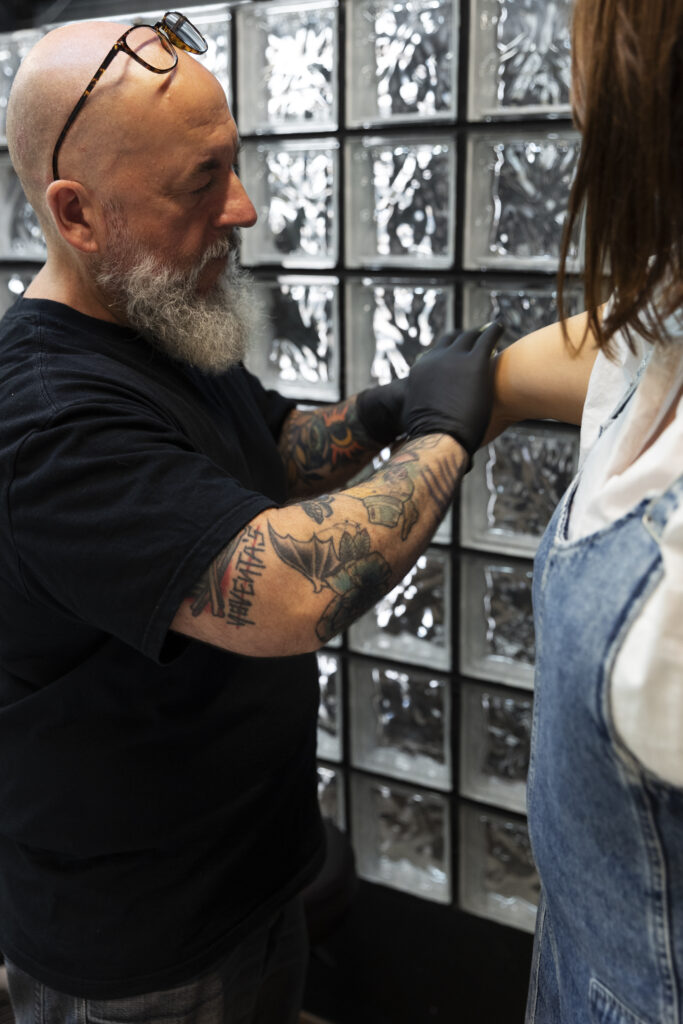
Balancing Color and Black & Grey Tattoos
One of the most significant decisions you will face when designing your sleeve tattoo is whether to use color or stick with black and grey ink. Each option has its unique advantages and can convey different emotions and aesthetics. Color tattoos are often vibrant and eye-catching, allowing for a wide range of expression through hues and shades.
They can bring life to floral designs or enhance mythical creatures with rich details. On the other hand, black and grey tattoos offer a classic and timeless appeal. This style can create striking contrasts and intricate shading that adds depth to the design.
Black and grey tattoos are often favored for their versatility; they can evoke a sense of nostalgia or seriousness depending on how they are executed. Ultimately, the choice between color and black & grey should align with your personal style and how you envision your sleeve coming together.
Embracing Coherence through Consistency
Achieving coherence in your sleeve tattoo requires consistency in design elements throughout the piece. This consistency can manifest in various ways, such as maintaining a similar color palette or using recurring motifs that tie different sections together. For example, if your sleeve features various animals as part of its theme, ensuring that they share similar stylistic traits can create a unified look.
Additionally, consistency in line work and shading techniques is crucial for maintaining harmony within the design. If different parts of your sleeve are executed in varying styles or techniques, it may result in a disjointed appearance that detracts from the overall impact. By working closely with your tattoo artist and establishing clear guidelines for consistency from the outset, you can ensure that your sleeve remains cohesive throughout its entirety.
Committing to the Process of Building a Cohesive Sleeve
Building a cohesive sleeve tattoo is not just about creating an impressive piece of art; it’s also about committing to the process involved in its creation. This journey often requires multiple sessions over an extended period, allowing for careful planning and execution at each stage. Patience is essential as you work with your artist to develop each section of your sleeve gradually.
Moreover, embracing this process allows for reflection and adjustment along the way. As your sleeve evolves, you may find inspiration for new elements or changes that enhance its overall coherence. Being open to this evolution can lead to unexpected yet rewarding outcomes that enrich your tattoo experience.
Ultimately, committing to this journey ensures that your sleeve becomes not just an expression of art but also a testament to your personal growth and creativity over time.
FAQs
What is a cohesive sleeve tattoo?
A cohesive sleeve tattoo is a large tattoo that covers the arm, typically from the shoulder to the wrist, and is designed to flow seamlessly as one cohesive piece.
How can I coordinate multiple tattoos into a cohesive sleeve?
To coordinate multiple tattoos into a cohesive sleeve, it’s important to work with a skilled tattoo artist who can help you plan and design the overall look of the sleeve. This may involve incorporating existing tattoos into the design, or creating new tattoos that complement each other.
What are some design elements to consider for a cohesive sleeve tattoo?
Design elements to consider for a cohesive sleeve tattoo include theme, color palette, style (such as traditional, realism, or geometric), and how the tattoos will flow together on the arm.
Should I work with one tattoo artist for the entire sleeve?
Working with one tattoo artist for the entire sleeve can help ensure a cohesive look, as the artist will have a better understanding of how to integrate multiple tattoos into one cohesive design. However, some people choose to work with different artists for different parts of the sleeve.
How long does it take to complete a cohesive sleeve tattoo?
The time it takes to complete a cohesive sleeve tattoo can vary depending on the size and complexity of the design, as well as the individual’s pain tolerance and the artist’s schedule. It may take multiple sessions over several months to complete a full sleeve.
